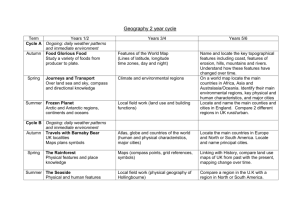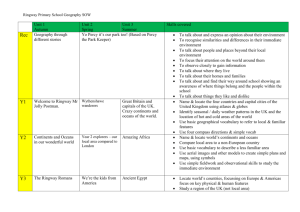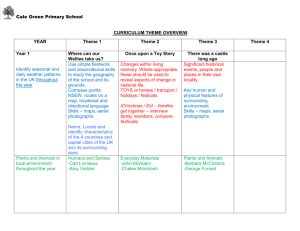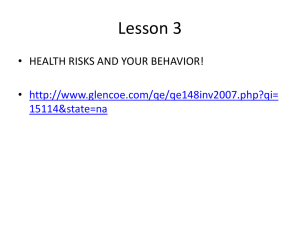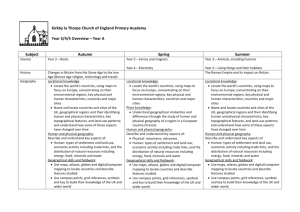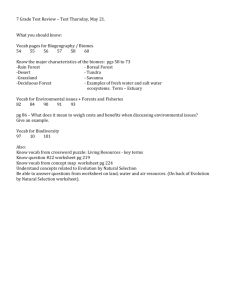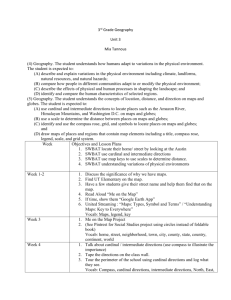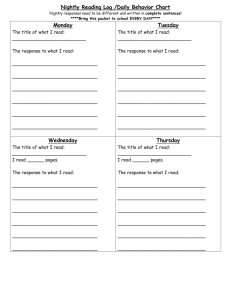YEAR ONE YEAR TWO YEAR THREE YEAR FOUR YEAR FIVE
advertisement
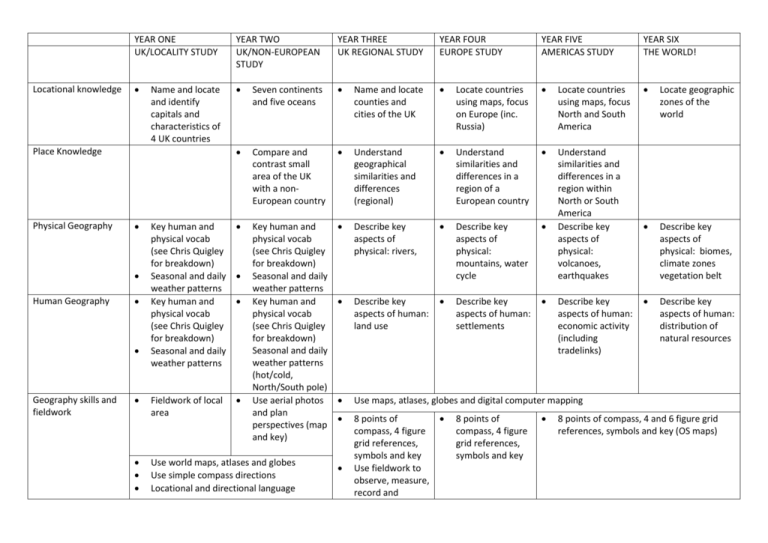
Locational knowledge YEAR ONE UK/LOCALITY STUDY YEAR TWO UK/NON-EUROPEAN STUDY YEAR THREE UK REGIONAL STUDY YEAR FOUR EUROPE STUDY YEAR FIVE AMERICAS STUDY YEAR SIX THE WORLD! Seven continents and five oceans Name and locate counties and cities of the UK Locate countries using maps, focus on Europe (inc. Russia) Locate countries using maps, focus North and South America Locate geographic zones of the world Compare and contrast small area of the UK with a nonEuropean country Understand geographical similarities and differences (regional) Understand similarities and differences in a region of a European country Key human and physical vocab (see Chris Quigley for breakdown) Seasonal and daily weather patterns Key human and physical vocab (see Chris Quigley for breakdown) Seasonal and daily weather patterns Key human and physical vocab (see Chris Quigley for breakdown) Seasonal and daily weather patterns Key human and physical vocab (see Chris Quigley for breakdown) Seasonal and daily weather patterns (hot/cold, North/South pole) Use aerial photos and plan perspectives (map and key) Describe key aspects of physical: rivers, Describe key aspects of physical: mountains, water cycle Understand similarities and differences in a region within North or South America Describe key aspects of physical: volcanoes, earthquakes Describe key aspects of physical: biomes, climate zones vegetation belt Describe key aspects of human: land use Describe key aspects of human: settlements Describe key aspects of human: distribution of natural resources Use maps, atlases, globes and digital computer mapping 8 points of compass, 4 figure grid references, symbols and key Use fieldwork to observe, measure, record and Name and locate and identify capitals and characteristics of 4 UK countries Place Knowledge Physical Geography Human Geography Geography skills and fieldwork Fieldwork of local area Use world maps, atlases and globes Use simple compass directions Locational and directional language 8 points of compass, 4 figure grid references, symbols and key Describe key aspects of human: economic activity (including tradelinks) 8 points of compass, 4 and 6 figure grid references, symbols and key (OS maps) present the human and physical features in the local area. History- MUST be taught in order Artefact/ Place Changes within living memory Changes within living memory Stone Age to Iron Age Person The lives of significant individuals (national) The lives of significant individuals (international) Roman Empire, impact on Britain Event Significant events, people and places in locality Significant event beyond living memory- globally Settlements by the Anglo-Saxons and Scots Viking and Anglo Saxon struggle for the kingdom of England to the time of Edward the Confessor (MUST INCLUDE LOCAL HISTORY STUDY) British history beyond 1066 Ancient Greece Earliest civilisations and a depth study of one of the following; Ancient Sumer, Indus valley, Ancient Egypt, The Shang Dynasty of Ancient China A non-European society that provides contrast with Britain
